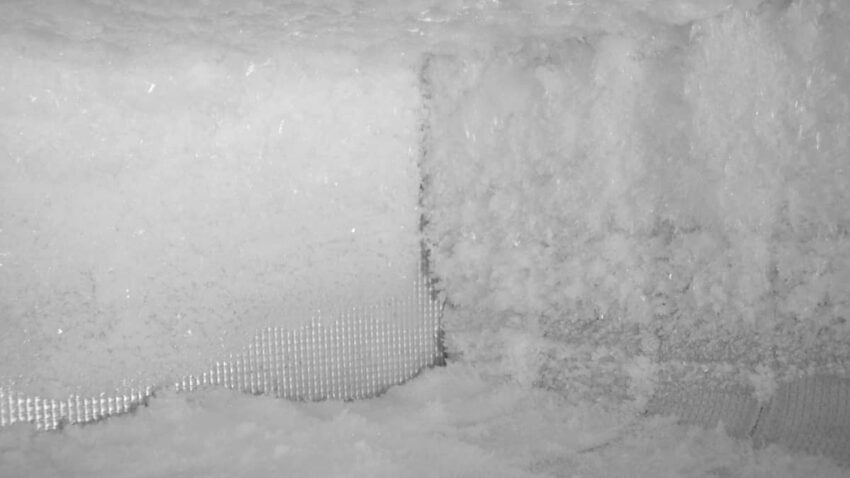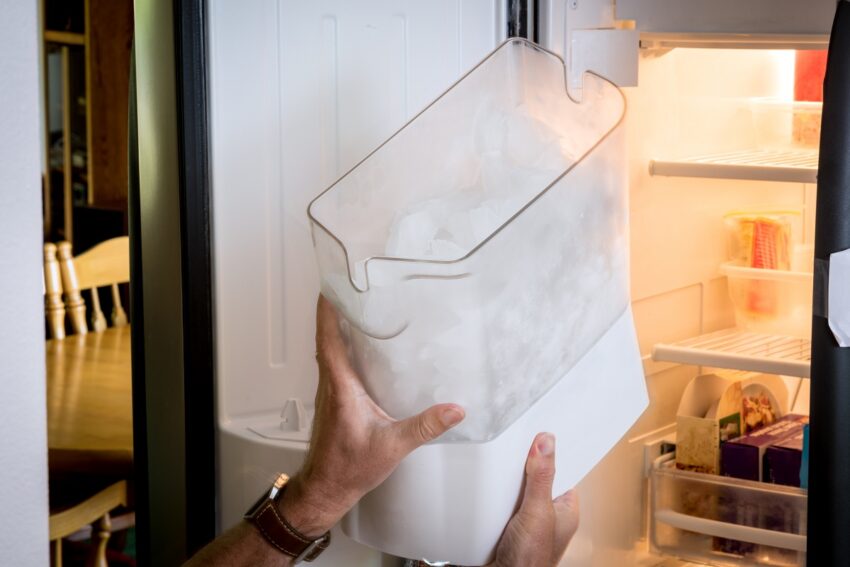When it comes to yoga, there are various styles and forms that cater to different…

Why Does the Back of My Fridge Ice Up?
Have you ever noticed a layer of ice forming at the back of your fridge? It’s a common issue that many people encounter, but what causes this ice buildup, and how can you prevent it? In this article, we will explore why the back of my fridge ice up and provide you with practical solutions to keep your fridge frost-free.
Your refrigerator plays a vital role in preserving and keeping your food fresh. However, when ice accumulates at the back of your fridge, it can be frustrating and worrisome. Ice buildup not only affects the efficiency of your fridge but can also lead to potential problems if left unaddressed. Understanding the causes and taking preventive measures can help you maintain a properly functioning refrigerator.
Understanding the Refrigeration Process

To comprehend why ice forms at the back of your fridge, it’s essential to understand the refrigeration process. Refrigerators remove heat from the interior compartment, cooling the stored items. The evaporator coils at the back or inside the freezer compartment play a crucial role in this process. When the fridge compressor starts, it initiates the refrigeration cycle. The compressor compresses the refrigerant, raising its temperature and pressure. The high-pressure refrigerant then flows through the condenser coils at the back of the fridge, releasing heat to the surrounding environment. As the refrigerant loses heat, it cools down and becomes liquid.
Next, the liquid refrigerant enters the expansion valve or capillary tube, where its pressure drops suddenly. This pressure drop causes the refrigerant to evaporate rapidly, absorbing heat from the surrounding air. The evaporator coils, where the refrigerant evaporates, are responsible for cooling down the interior compartment. As the air inside the fridge comes into contact with the cold evaporator coils, its temperature decreases, allowing the items stored inside to remain cool.
However, during the refrigeration process, moisture from the air can condense on the evaporator coils. This moisture freezes and accumulates over time, leading to the formation of ice. The presence of ice on the evaporator coils reduces their ability to absorb heat efficiently, causing the fridge to work harder to maintain the desired temperature. In some cases, the ice buildup can become excessive, obstructing the airflow and affecting the overall cooling performance of the refrigerator.
If you’re experiencing a situation where the fridge compressor starts then stops suddenly, it could indicate a malfunctioning compressor or an issue with the temperature control system. It’s recommended to have a professional technician inspect and repair the fridge to ensure it operates correctly and efficiently.
Why Does the Back of My Fridge Ice Up?
- Lack of Proper Airflow: Restricted airflow due to improper placement of items or blocked vents can lead to moisture buildup and subsequent ice formation.
- Faulty Defrost System: If the defrost system, including the defrost heater, thermostat, or timer, malfunctions, it can result in excessive ice accumulation.
- Door Seal Issues: A damaged or worn-out door seal allows warm air from the surroundings to enter the fridge, causing condensation and ice buildup.
- Temperature Settings: Incorrect temperature settings, either too low or too high, can contribute to ice formation in the back of the fridge.
- Overloading the Fridge: Overloading the fridge with too many items can obstruct the airflow and prevent proper cold air circulation, leading to ice formation.
The Impact of Ice Buildup on Fridge Performance
Ice buildup can have several adverse effects on the performance of your refrigerator:
- Reduced Cooling Efficiency: Excessive ice formation reduces the efficiency of the evaporator coils, resulting in inadequate cooling and potentially spoiled food items.
- Increased Energy Consumption: When ice accumulates, the fridge requires more energy to maintain the desired temperature, leading to higher energy bills.
- Uneven Temperature Distribution: Ice formation can disrupt the airflow within the fridge, causing temperature inconsistencies and potentially freezing delicate items.
- Motor Strain: The fridge’s motor works harder to compensate for the reduced cooling efficiency, leading to increased wear and tear and potential breakdowns.
Preventive Measures to Avoid Ice Buildup
- Regularly Clean the Fridge: Cleaning the interior and back of the fridge regularly helps remove dust and debris that can obstruct airflow and contribute to ice formation.
- Check and Replace Faulty Parts: Regularly inspect the defrost system components, such as the defrost heater, thermostat, or timer, and replace them if necessary.
- Properly Arrange Food Items: Organize the items in your fridge in a way that allows for proper airflow and prevents the blocking of vents.
- Maintain Optimal Temperature Settings: Set the temperature controls according to the manufacturer’s recommendations to prevent excessive cooling or warming that can lead to ice buildup.
- Ensure Proper Ventilation: Keep the back of the fridge clear of obstructions, allowing unrestricted airflow and preventing condensation.
Troubleshooting and Fixing Ice Buildup Issues
If you’re already experiencing ice buildup in the back of your fridge, here are some troubleshooting steps to resolve the issue:
- Check the Defrost System: Inspect the defrost system components for any faults, such as burned-out defrost heaters or faulty thermostats. Replace any defective parts.
- Inspect the Door Seal: Ensure the door seal is intact and properly sealing the fridge. Replace it if damaged or worn out.
- Defrosting the Fridge Manually: Turn off the fridge and let it defrost naturally. Use towels or a bowl of warm water to speed up the process. Once defrosted, clean the interior thoroughly.
- Seeking Professional Assistance: If the ice buildup issue persists or you’re unsure about the cause, you should contact a professional appliance repair technician for a thorough diagnosis and repair.
Conclusion
Ice buildup at the back of your fridge can be a nuisance, impacting its performance and potentially leading to other problems. Understanding the causes and implementing preventive measures can keep your fridge ice-free and operating efficiently. Regular cleaning, proper ventilation, and addressing any faulty parts will ensure that your fridge continues to serve its purpose effectively, keeping your food fresh and your energy bills in check.
You may like to read Cucumber Kimchi Recipe: The Perfect Spicy Side Dish


